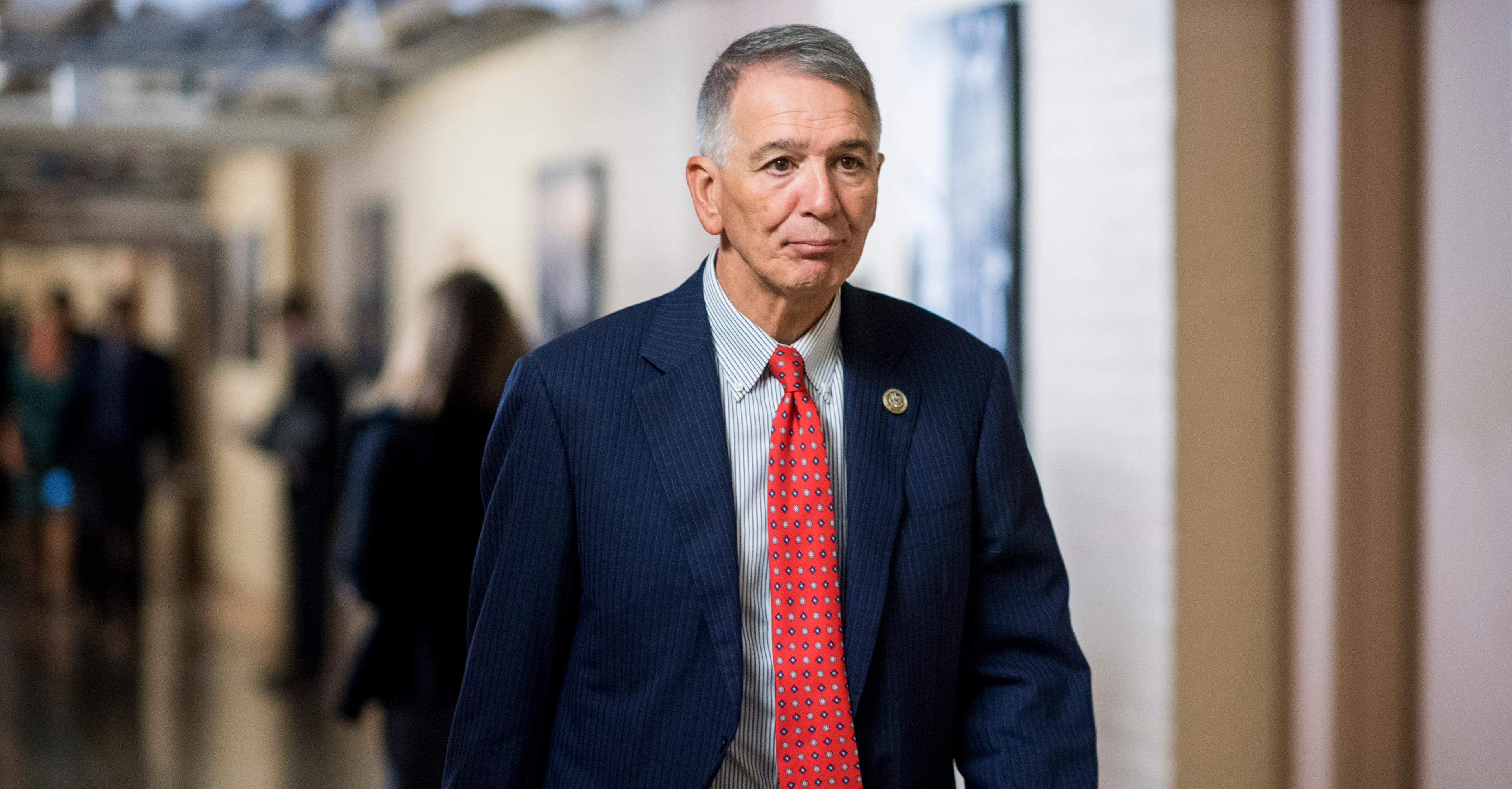Big Wool wants you to believe it’s nice to animals and the environment. It’s not.
Big Wool wants you to believe it’s nice to animals and the environment. It’s not. The reality for wool sheep is cruel and greenwashed with inaccurate marketing tactics. Here’s how to think about your next fashion purchase.


We’ve been banging this drum at Future Perfect for a long time: Animal agriculture is terrible not just for animals, but also for the planet. And despite the meat industry’s ferocious greenwashing efforts, that message is finally, if haltingly, breaking into mainstream climate discourse.
But there’s one big domain of livestock production that is often seen as exempt from the hard trade-offs of farming animals for human consumption: animals raised for clothing, like the more than 1.2 billion sheep farmed for wool, or the tens of millions of cows whose skin is processed into leather. Both species, as ruminants, emit massive volumes of methane (the potent greenhouse gas that is responsible for about a quarter of global warming) and take up vast land areas that could otherwise host native, carbon-sequestering ecosystems.
According to one analysis of wool production in Australia, by far the world’s top exporter, the wool required to make one knit sweater is responsible for 27 times more greenhouse gases than a comparable Australian cotton sweater, and requires 247 times more land. Sheep farming threatens native species around the world, from koalas in Australia to sage grouse in the US. Domesticated sheep in the American West have, as my colleague Paige Vega has reported, been implicated in mass die-offs of their wild cousins, Rocky Mountain bighorn sheep, through the spread of the lethal pathogen Mycoplasma ovipneumoniae.
Ruminant farming’s hunger for land has made it a prime engine for colonial expansion around the world; we see this in Brazil, for example, where cattle ranching is driving illegal seizures of Indigenous land. Sheep brought by colonists to Australia “immediately trampled and destroyed all of the native yams and edible vegetables that Aboriginal people had. The land that Aboriginal people never ceded was taken for pastoral practices,” said Emma Hakansson, the Australia-based founding director of Collective Fashion Justice, which advocates for what she calls a “total ethics” fashion system: one that’s fair to people, animals, and the planet. “Animal-derived materials in particular are a focus for us because it’s in those supply chains that all three of those groups are consistently harmed.”
Yet animal-based textiles benefit from a natural, planet-friendly image. It’s still common to see media and the industry itself misleadingly report that animal-based fabrics are just a byproduct of meat production that would otherwise be thrown in the trash and that it’s better for the environment to use them — a claim that obfuscates the economy of animal production.
“Wool and leather are not byproducts of meat production, they’re co-products: producers support their livestock operations by selling meat as well as wool and hides, all of which keeps them afloat,” Matthew Hayek, an assistant professor of environmental studies at New York University, told me in an email.
Wool in particular evokes biblical scenes of sheep farming that are especially conspicuous during the Christmas season. It’s “a mass-market commodity that operates stealthily under many layers of mythology, from legends of the golden fleece to bucolic images of sheep peacefully grazing in open pasture,” as a 2021 report by the Center for the Biological Diversity and Collective Fashion Justice put it. “But wool is not a fiber simply provided by nature — it is a scaled product of modern industrial, chemical, ecological and genetic intervention that’s a significant contributor to the climate crisis, land degradation, water use, pollution and biodiversity loss.”
Although wool shearing is widely misperceived as merely a benign “haircut” for sheep, the modern sheep industry, like all industries that mass produce animals, is egregiously violent. Sheep are subjected to painful mutilations like tail docking and mulesing, a procedure in which skin from their hindquarters is cut off to prevent flystrike, a parasitic infection the animals are prone to because of how they’ve been bred.
Some brands and certification programs have banned mulesing in their supply chains, but that practice just skims the surface of the industry’s cruelty. Many appalling undercover videos of wool production have emerged over the years, showing sheep beaten and wounded by clippers as workers restrain them and shear off their hair as quickly as possible. Eventually, they’re sent to slaughter.
:no_upscale()/cdn.vox-cdn.com/uploads/chorus_asset/file/25176554/WAM32141.jpg)
The lesser of two evils?
Wary of climate regulation, wool producers are embracing the same greenwashing diversions as the meat industry — they are, after all, the same industry. Misleading “regenerative wool” claims — a phrase that “lacks any standard definitions or accountability,” as a 2023 report by the Center for Biodiversity and Collective Fashion Justice put it — have proliferated at progressive-coded fashion brands like Allbirds, Everlane, and Reformation.
Many (though by no means all) of the alternatives to wool on the market are made of fossil fuel-based synthetic materials like polyester, acrylic, and nylon. These materials have their own terrible externalities, contributing to carbon emissions and microplastic pollution, the effects of which we’re only beginning to comprehend. Fabrics like wool contribute to this problem, too, when they’re coated in dyes that release microplastics, and wool generates significant chemical pollution through scouring — the highly polluting, detergent-intensive process used to remove the grease from sheep’s hair.
While there’s an increasing variety of novel, low-resource, plant-based alternatives (Hakansson points to Tencel, a silky smooth fabric made of wood pulp, hemp, and recycled materials), the fashion industry largely lacks the incentive to invest in these at scale. Until better options become more widely accessible, consumers who decide to buy new clothes for the winter are often choosing between animal fibers or synthetic ones.
“Both cause harm. Deforestation, wild habitat loss, emissions, overgrazing, and erosion for wool, and fossil fuel extraction and microplastic pollution for polyester,” Hayek pointed out. “The most climate-compatible system of making materials such as clothing fibers involves moving away from both fossil fuels and over-abundant animal production.”
But we live in a world of trade-offs, and the planetary impacts of wool and synthetics have to be considered in comparison to one another, not in a vacuum. On that score, wool consistently ranks worse than synthetics.
“We know from data across the wool industry, the leather industry, the fur industry, that synthetic alternatives almost always have a significantly lower climate impact,” Hakansson said (though her organization still rightly campaigns to end the fashion industry’s dependence on fossil-based synthetics).
To name just one example, a 2021 study using data from the Swiss sustainability assessment nonprofit Ecoinvent found that wool had far higher greenhouse gas emissions than alternatives for the same amount of fabric, including nearly nine times more than polyester. This, combined with the dreadful animal welfare consequences of wool farming, makes the choice between a wool coat and a long-lasting synthetic one very clear. The same is true of leather, which has truly atrocious environmental impacts versus its synthetic alternatives (and there are now far better leather alternatives, made from plants like cactus, apple, and pineapple).
:no_upscale()/cdn.vox-cdn.com/uploads/chorus_asset/file/25176566/Screenshot_2023_12_20_at_10.35.47_AM.png)
But the problem goes deeper than wool versus synthetics because these industries have made good bedfellows. Widespread cheap synthetics have enabled fast fashion, making it possible for brands to produce stupefying volumes of disposable fabrics. These are now very commonly combined with wool to create hybrid garments. According to the Center for Biodiversity and Collective Fashion Justice’s recent analysis of 13 top clothing brands, more than half of wool items were blended with synthetics, giving them in-demand properties like machine washability — meaning, in other words, that synthetics are being used to enhance the appeal of wool.
It’s unfortunate, in this context, to see fashion critics who ought to know better fetishize unadulterated animal fibers instead of thinking clearly about their outsize role in a many-layered harmful system. “The climate, biodiversity and ethical impacts of the wool and cashmere industries are so poorly understood” in fashion circles, Hakansson said in an email. One prominent fashion influencer, for example, when asked which fabrics were the most ethical, recently said that “natural” fibers (including animal ones like wool) were best because they’re biodegradable.
This is sometimes true, though not always — it depends on how the fabric is processed, for example, as wool made with certain dyes or coated with plastic is rendered not biodegradable. But a contextless statement about biodegradability is more misleading than useful in helping people understand the full picture of how their clothing affects the environment. So it’s not surprising that the public is just as confused about the impacts of animal-based garments; a 2017 global consumer survey, for example, found that 87 percent of respondents believed wool is “safe for the environment,” and more than half said it was “sustainably produced.”
Our naturalistic fantasies
Several times this year, after suffering through lectures by various influencers extolling animal fibers, I thought back to a widely discussed piece by data scientist Hannah Ritchie on the naturalistic fallacies that pervade popular understanding of what’s good for the planet. “We’re skeptical of synthetic stuff that comes out of a factory,” she wrote, while we find virtue in things that seem natural or primordial. For example, consumers are consistently more likely to say that eating locally grown food instead of food shipped across the world is better for the planet than eating less meat, even though decidedly the opposite is true.
I’d take Ritchie’s point a step further. Perceptions of the natural don’t emerge from nowhere; they’re invented and marketed. And animal agribusiness is especially good at selling a folksy image that masks the industry’s violence and environmental destruction.
In the minds of many consumers, the wool industry has naturalized itself with the idea that we’re doing sheep a favor by shearing off their hair, a myth so persistent that it’s become lodged in the minds of even some people who think about animal ethics for a living. “Sheep that are not regularly shorn, as they’ve now evolved to be, suffer from having their heavy coat dragging them down,” philosopher Martha Nussbaum, who recently wrote a book on what we owe nonhuman animals, told the Boston Review in defense of wool earlier this year.
Nussbaum’s account has it entirely backward. Sheep were bred by humans to overproduce hair, they didn’t evolve that way — and unlike wild animals, domesticated sheep don’t simply reproduce without human management. They’re products, brought into the world by agribusiness according to demand for their hair, milk, and meat, and with exactly as much regard for their welfare as will maximize profit. We could choose to simply stop breeding them and restore native ecosystems in their place.
:no_upscale()/cdn.vox-cdn.com/uploads/chorus_asset/file/25178457/WAM9942.jpg)
Other animal wools, like goat and alpaca, are smaller industries than sheep, “but on the basis of each spool of wool being produced, they all cause pretty comparable greenhouse gas emissions,” Hayek said. They’re also no less cruel.
While defenders of animal-based materials often claim that they’re higher quality from a consumer perspective than synthetics and therefore less likely to end up in a landfill, this is not the whole picture. The manufacturing process and treatment of workers, not just the material itself, affect the quality of a garment. If you know where to look, there are plenty of durable, warm, stylish, animal-free fabrics on offer (like the Canadian outerwear brand Noize, which, in my anecdotal experience, is universally beloved by people who avoid animal fibers.) Innovative plant-based fabrics like vegetable cashmere, made from soybeans, are also on the rise.
We still, in the end, have to wear clothes. So what should we wear? In a reasonable world, ordinary people wouldn’t have to exhaust themselves sifting through contradictory sustainability claims because fast fashion and animal agriculture would be well-regulated. But in this world, we have to use our judgment. And we have to be extremely skeptical of letting nostalgic appeals to nature commandeer our ethical reasoning.
With 100 billion new garments manufactured globally every year and overwhelming volumes of discarded clothing, both Hayek and Hakansson stressed that the best option is to buy a lot less clothing overall, and buy used when possible. “How much raw material production do we really need?” Hakansson said. “If people are desperate to have a product like wool, you should be buying it secondhand.” There are also coats made from post-consumer recycled synthetics, which she opts for to keep warm.
“They’re not necessarily perfect,” she said, “but we need to be at least making the best decision we can. And animal-derived materials across the board fail to meet what should be considered best practice.”
A version of this story originally appeared in the Future Perfect newsletter. Sign up here!

ModRetro recreated the N64 controller for its M64 console
- 18 hours ago

Are Chelsea really title contenders? Arsenal clash will give us an answer
- 17 hours ago

The Super Mario Galaxy bundle for the Switch is 20 percent off today only
- 9 hours ago

Notification for CDF’s appointment to be issued in due course of time: Khawaja Asif
- 5 hours ago

Sources: Vanderbilt's Lea lands 6-year extension
- 17 hours ago

FC Headquarters Suicide Blast: All three attackers confirmed to be Afghan nationals
- 8 hours ago

OpenAI denies liability in teen suicide lawsuit, cites ‘misuse’ of ChatGPT
- 18 hours ago

Westminster International School hosts vibrant food festival celebrating cultural diversity and charity
- 8 hours ago

Top 5 of CFP unchanged; Ducks leapfrog Ole Miss
- 17 hours ago

Sources: AD (calf) returning to Mavs vs. Lakers
- 6 hours ago

The CDC’s troubling new second in command, briefly explained
- 16 hours ago

Pakistan, Egypt vow to deepen cooperation in various sectors, including defense
- 8 hours ago









